All about the scilla flower
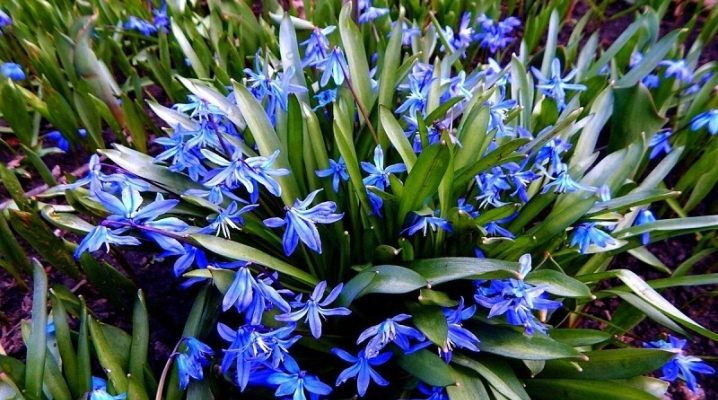
Knowing everything about the scilla flower, about the description of the woodland, gardeners and florists can make flawlessly correct decisions. There are two-leaved Scylla, Peruvian and other types of plants. Planting and subsequent care in the open field deserve attention, the main dangers that lie in wait for the culture.
Description of the flower
Inexperienced gardeners are guided by plants that are minimally whimsical and perfectly adapt to various conditions. They are much more practical than exotic varieties of crops that require complex care. Scylla is considered a good choice, it is also a blueberry, sometimes classified as one of the snowdrops. This species is quite decorative and has an excellent immune level. Scylla is a typical perennial.
In nature, it is found in various regions of Europe, Asia and even Africa. Traditionally, this genus was classified as part of the Liliaceae or Hyacinth family, but then botanists changed their point of view.
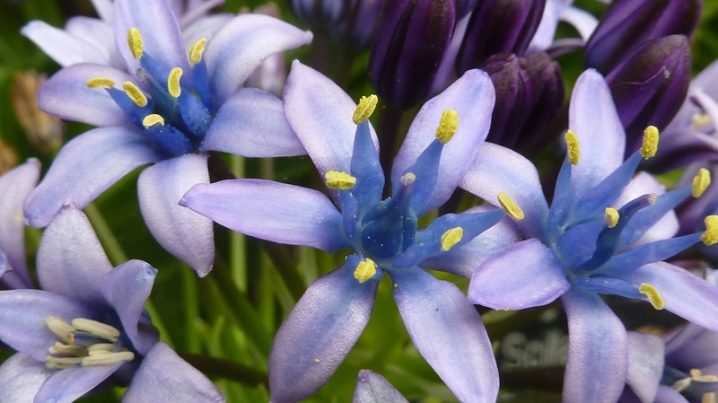
According to the modern classification, it belongs to the Asparagus family, the other representatives of which are:
- aloe;
- bought;
- pushkinia;
- lily of the valley;
- hyacinth;
- yucca;
- the actual asparagus.
Primrose - another name - is quite frost-hardy. The culture looks pretty good. These are typical spring perennials. Outwardly, they look gentle and graceful. In nature, the scilla inhabits forest and meadow areas, where it forms a lush blue carpet. The scrub is very stable and tenacious. It is characterized by elongated internodes. The stems turn into thin rhizomes as they develop. Bulbs are distributed on their sides. Flowering in indoor and garden specimens is characteristic of only a few varieties.
The main part of the scyllas is constantly vegetating. The flowers turn white or green. There are also pink options. Inflorescences do not develop on the shoots - only single flowers are found there. The fruit of the woodland belongs to the achenes category and is very compact.
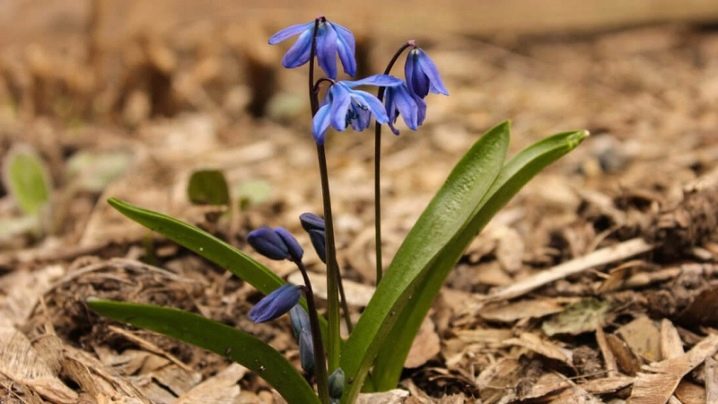
Types and varieties
- Scylla bell-shaped also known as the Spanish endymion. This species is found in the forest and meadow areas of the Iberian Peninsula. It is also found in the southern part of France. It is believed to be the most beautiful variety. It produces single stalks, which may include pink, white or pleasant blue flowers, reaching a cross section of 2 cm in racemose inflorescences. Flowering of this variety lasts about 2 weeks. It starts at the end of May. Bell-shaped Scylla bulbs definitely require winter shelter.
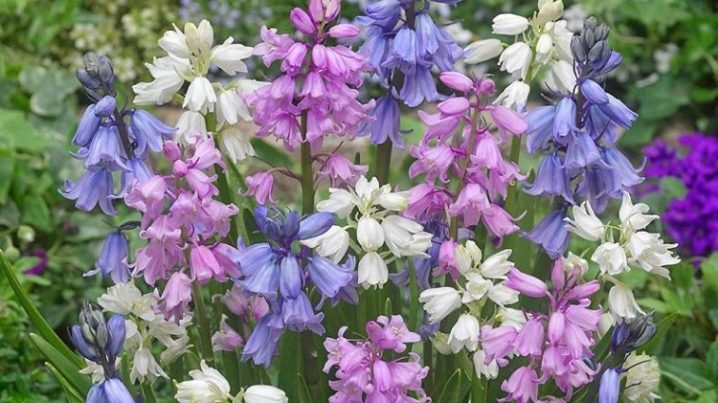
- Rose Queen variety differs in attractive pink flowers with a lilac tint. They have a scent, but it is rather weak. Large blue flowers are characteristic of Sky Blue and white is typical of La Grandes.
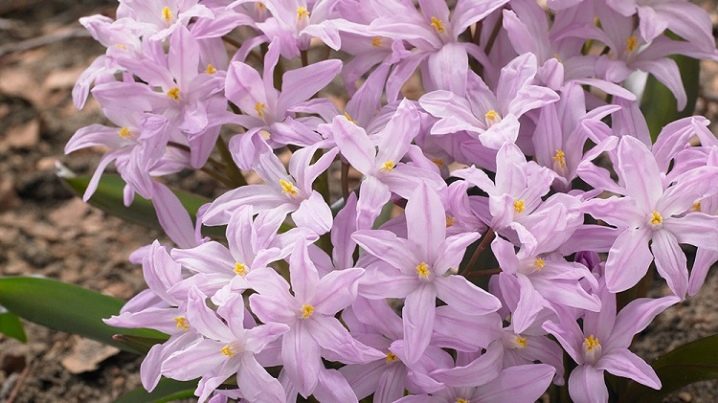
- Autumn forest described in the wild in Mediterranean countries, including northern Africa. It is also known in Asia Minor. A characteristic feature is the formation of 5 flower arrows, reaching a height of 15-20 cm. You can wait for flowering at the end of July or at the very beginning of August. This species was cultivated at the very end of the 16th century.
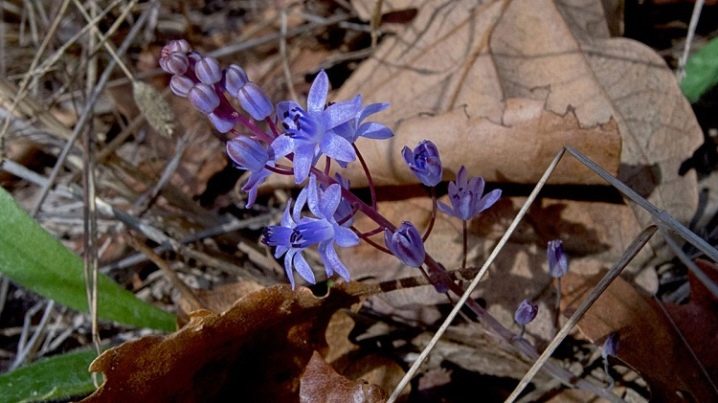
- Double-leaved scaffold - also an excellent perennial. It is characterized by a brown color of bulbs reaching a maximum of 25 mm. Most often there are 2 sheets, the length of which ranges from 50 to 200 mm. These leaves appear simultaneously with the inflorescence. The fruit is classified as a capsule in appearance; inside it are slightly brown seeds of an almost pure spherical shape.
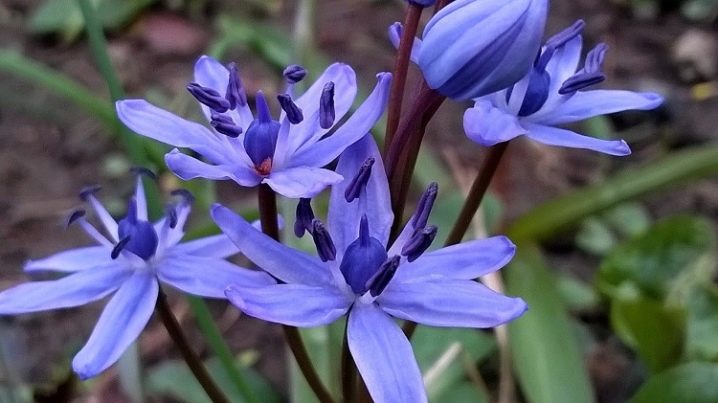
- A sky blue delightful color is characteristic of the Peruvian scilla. It blooms in spring or early summer. Plant height is 30-35 cm. It is characterized by the appearance of pretty dark green leaves. The flowers are small - up to about 1 cm, but their star-shaped shape and other features give a truly luxurious look. Along with the already described blue Spanish and others, there are still quite a few woods. Yellow coloration is not very typical for common varieties.
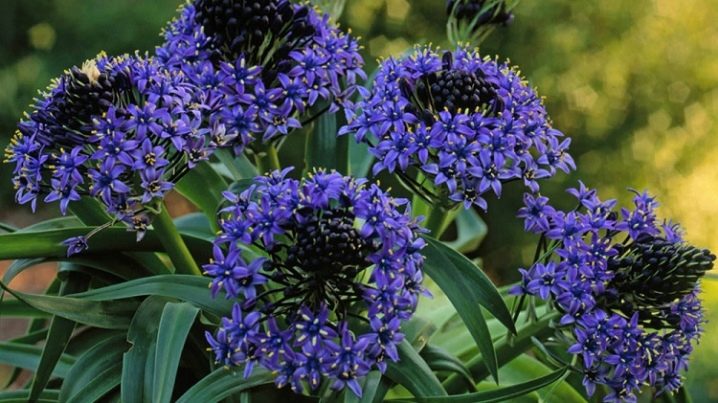
- Siberian Proleska - a species named so by mistake. In the conditions of Siberia and the Urals, of course, he cannot live. Its natural area is Crimea, the Caucasus and southern regions of Europe; flowers appear simultaneously with foliage and will not open during cloudy periods.
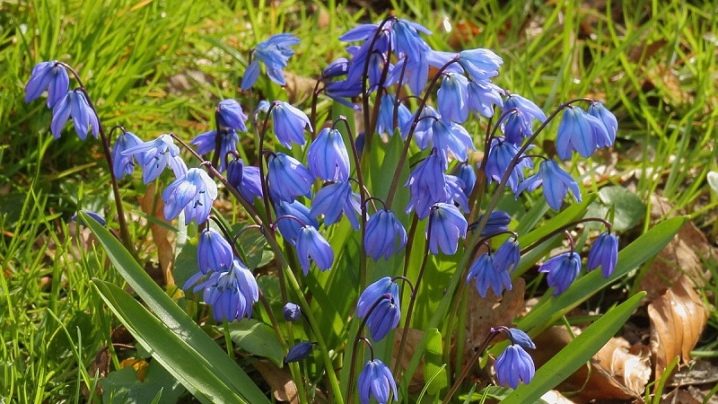
- Scylla proleskidnaya is a small herb. Its notable feature is the edibility of leaves and bulbs, their abundant saturation with vitamins. Height reaches 25-40 cm. The culture has a single ribbed flowering stem. Leathery leaves reach 25-30 cm in length; the culture will bloom for a long time, up to early frosts.
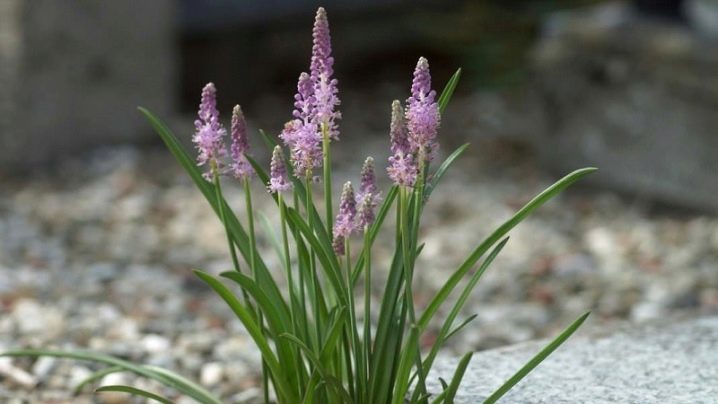
- Scylla campanulata is popular. This plant grows both in sunny areas and in partial shade. Rather, it is not a separate species, but a complex varietal mixture. Scylla Rosena will bloom normally in the last days of April. One onion can have up to 4 peduncles; the flowers are characterized by a delicate light blue tone, and this is mainly the Caucasian variety.
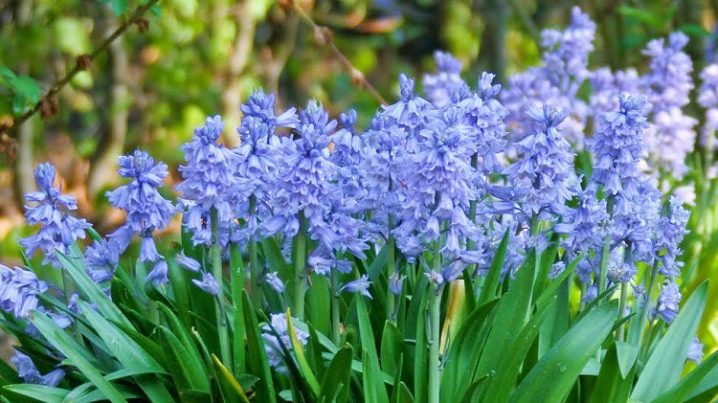
- Proleska "Pink" - a subspecies of bell-shaped type. It blooms early and is very beautiful at the same time. Flowering begins in April or May, depending on weather conditions. The usual height is 25 cm. Instead of red in this culture, the flowers are predominantly pink in color.
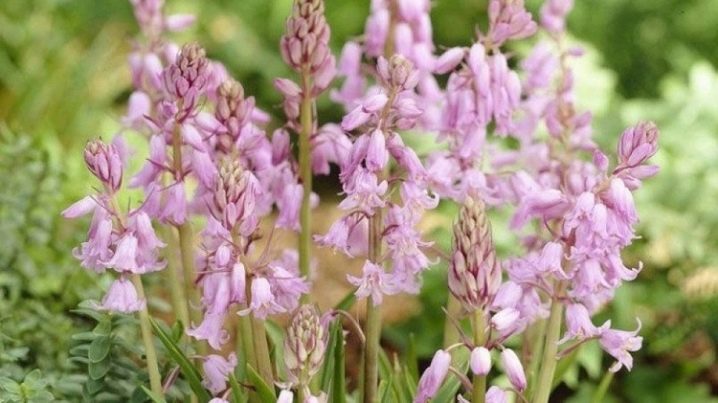
Growing conditions
Location
Moderate shading is very important for the forest. She feels great under the tree crowns. But direct sunlight affects such a plant badly. It is recommended to select fertile areas that allow air and water to pass through without problems. An acidic soil reaction, boggy or heavy soil structure is unlikely to succeed.
The soil
The neutral ground reaction is best suited for shedding. It can also be grown in soil with low acidity, as long as it is not destructive. When growing in pots you will need:
- drainage;
- leaf peat;
- fertile soil;
- coarse washed sand (it is also better to ignite it).

Planting and transplanting
Experts advise planting a scilla in the fall when it comes to types blooming in spring. The rest of the varieties are recommended to be planted about 45 days before the expected flowering date. The culture gets along well with other spring flowers. In a flower bed, it can be combined with any kind of plants. On good land, the scrub can live up to 10 years. However, transplanting is still the norm for this plant. This procedure can be done every 2-3 years. This technique allows you to preserve decorativeness. Children are separated from the bulbs. Seating should be done as soon as possible to prevent decay; the last decade of September and the first days of October are optimal.
Watering
It is better to irrigate the woodland in the morning hours. It is deliberately inadmissible to get even a small amount of water on the flowers. Mulching helps to simplify the work. Mulch reduces the need for both watering and loosening. Soil moisture should be maintained moderately, without overflow.
Top dressing
Normal outdoor care involves applying fertilizer as soon as shoots appear. Complex mineral compositions are optimal for this purpose. It is important to remember the rule: when specific varieties bloom, then they need to be fed. During active growth, the crop is fed with fertilizers for succulents.This is done both in a flower bed and in pot cultivation.
Theoretically, you can do without mineral feeding. But in this case, you will have to put up with the small decorative effect of the culture grown. Problems will arise with flowering. In the autumn season, it is necessary to use the basic mineral components - potassium, phosphorus and nitrogen - but the latter should not be abused. It is allowed to make top dressing even in late autumn, if the variety, in its germinated form, hibernates under a snow cover.

Reproduction
For reproduction, they use not only seeds, but also bulbs. Sometimes self-seeding is also used. However, the most productive option is considered to be the use of daughter bulbs. Seeds are usually ready for harvest at the end of June. Both varieties of planting material should be used immediately, because their shelf life is limited.
The seeds are sometimes planted directly into the soil. But it would be more correct to place them first in a container. In any case, a substrate saturated with organic components is used. A good level of aeration is very important for him. It can take 2 to 3 years between sowing and flowering, and this is the norm for the crop.
Diseases and pests
The danger for the scilla is represented by bulbous and gray rot. Achelenchoides also turns out to be a serious enemy. Infection is usually associated with high humidity and attempts to grow this crop in the lowlands. Its manifestation is yellow foliage, since when the bulb dies, the nutrient components stop flowing. The affected specimens will only have to be dug and burned. Healthy shoots should be soaked in hot water. It is even better for special prophylaxis to soak it in a fungicide solution.
When watering, the soil is disinfected with special preparations. Only after this can the Scylla be returned to its original place. The bulbs stored in boxes are treated with wood ash after the putrefactive stains have been removed. Rodents are very fond of bulbous crops. Steel nets help stop them. Thanks to such a fence, animals are simply deprived of access to underground parts. Dangerous for the forest mite and root meadow mite.
To protect against it, it is recommended to spill with a dissolved insecticide before planting; not only the soil needs to be protected with such a preparation, but also the mulch used.
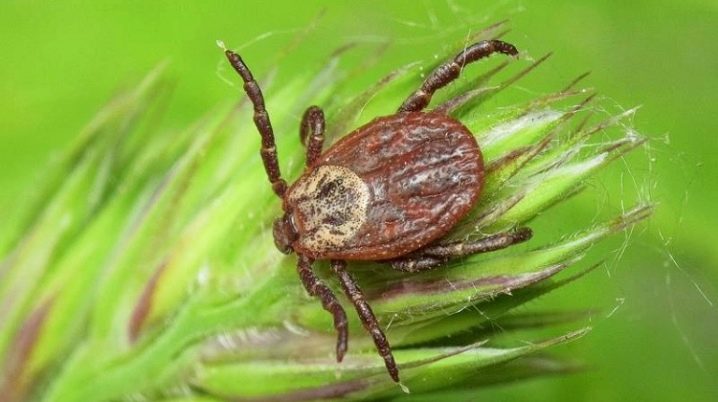







































































































The comment was sent successfully.